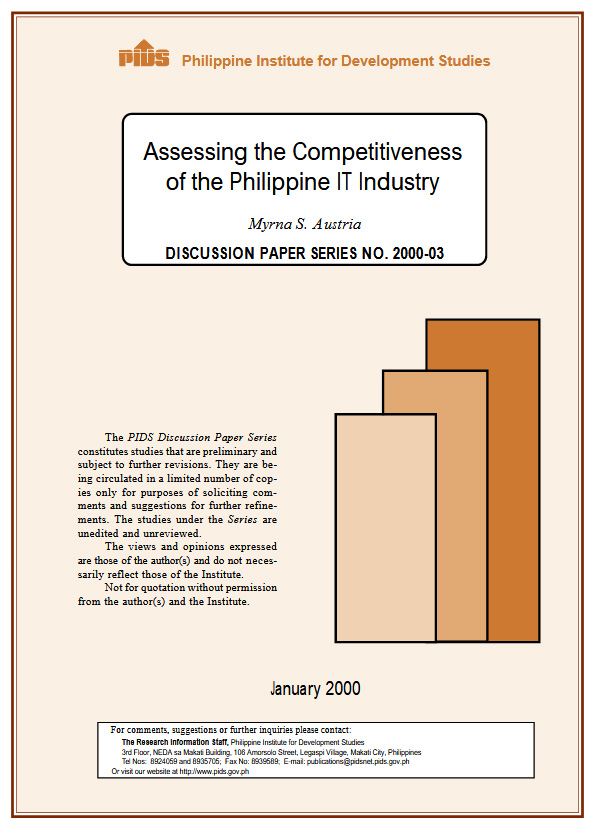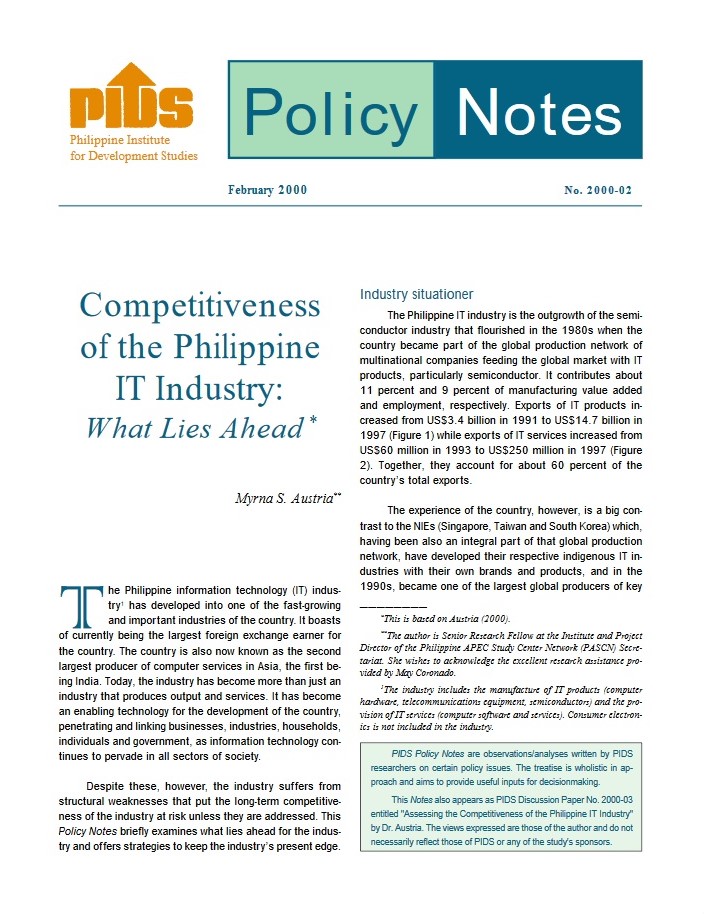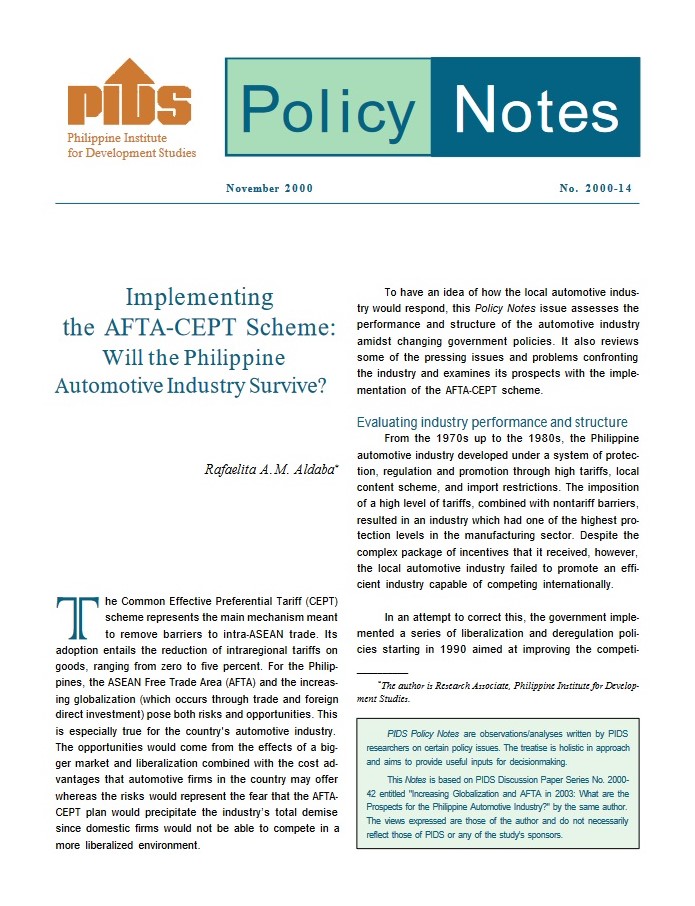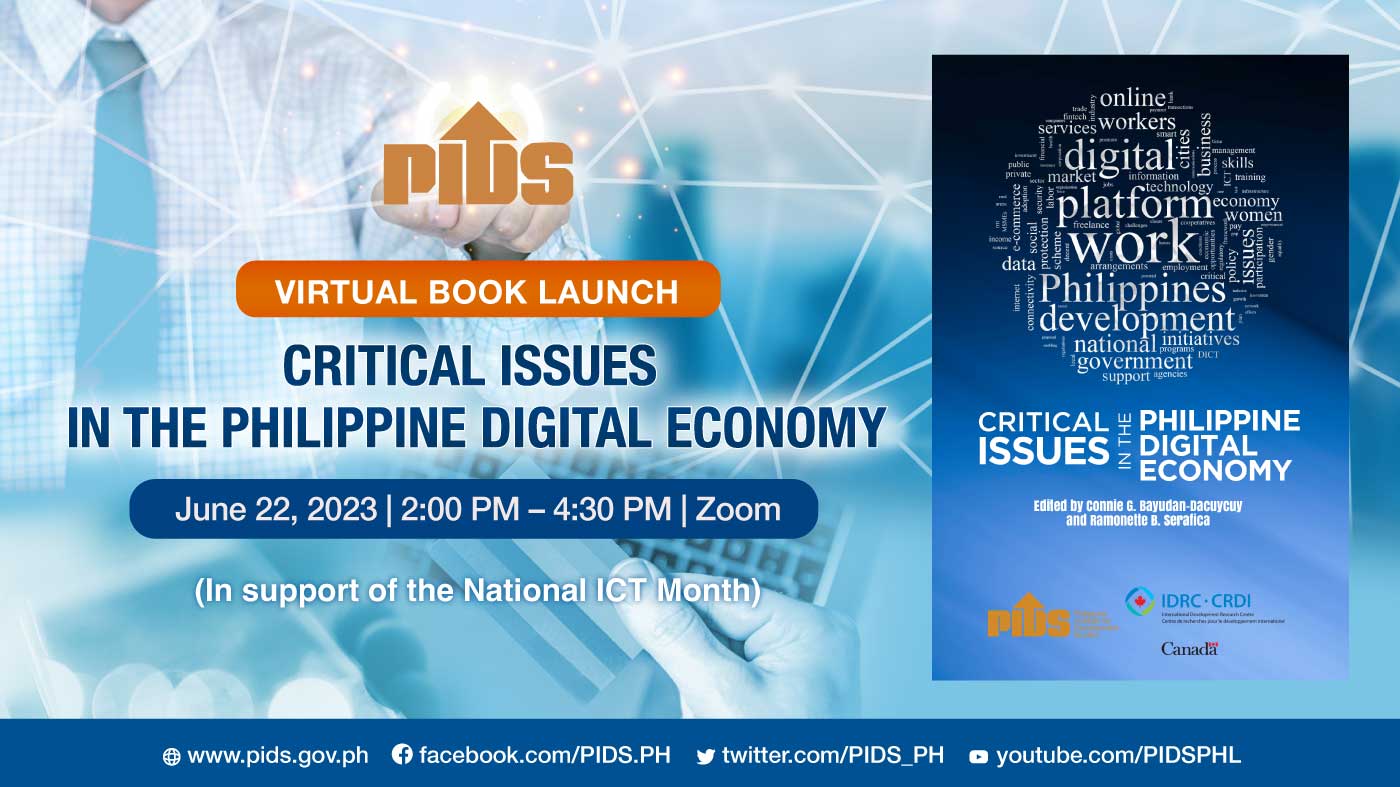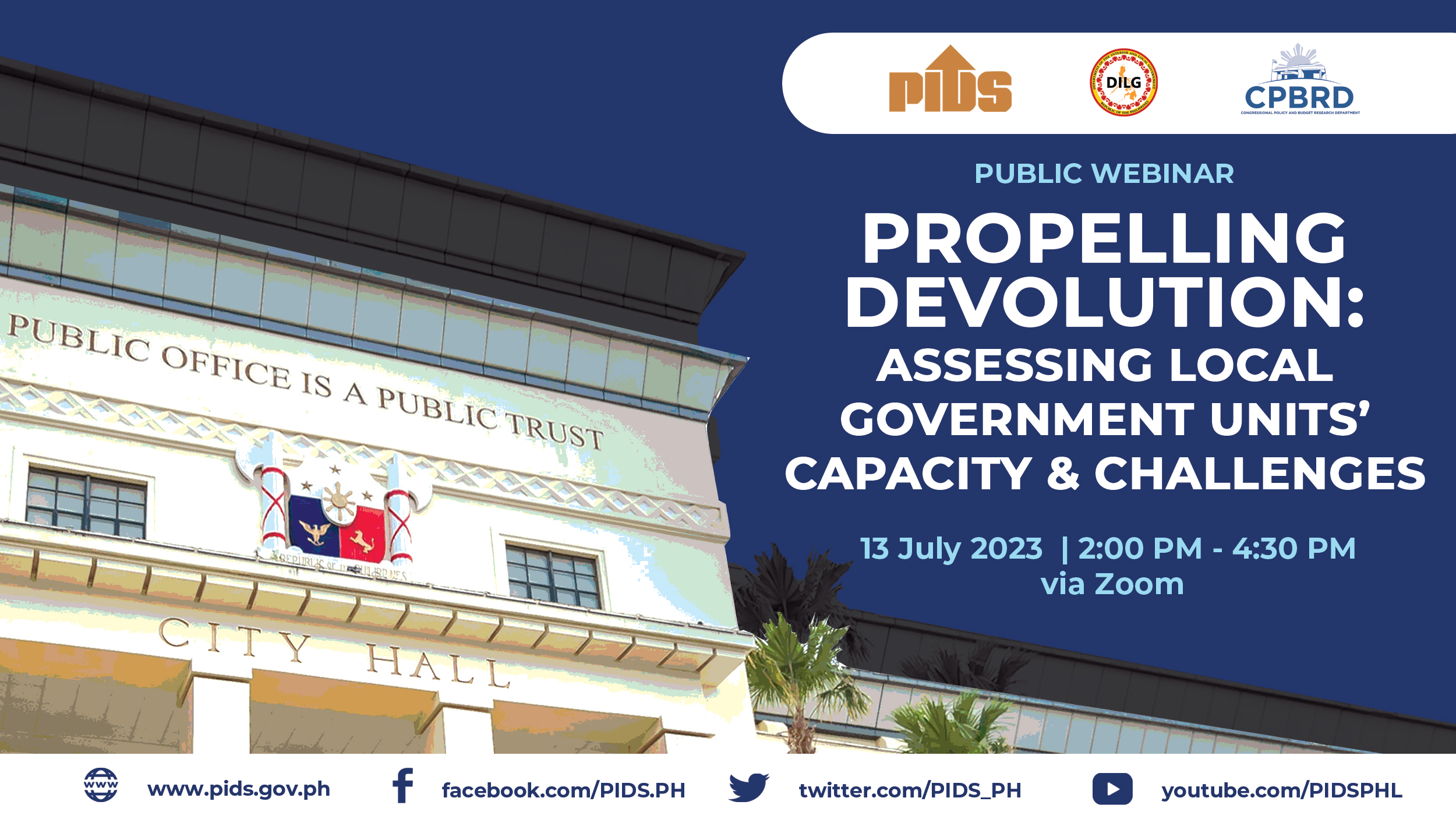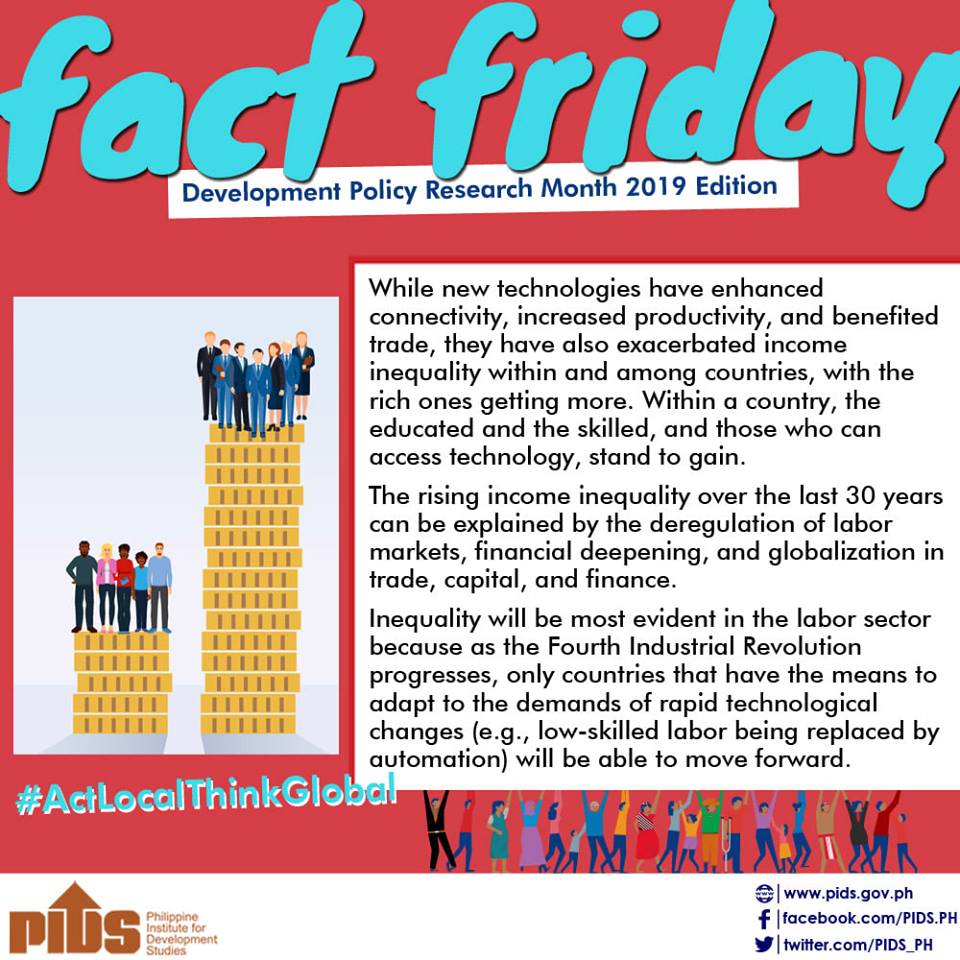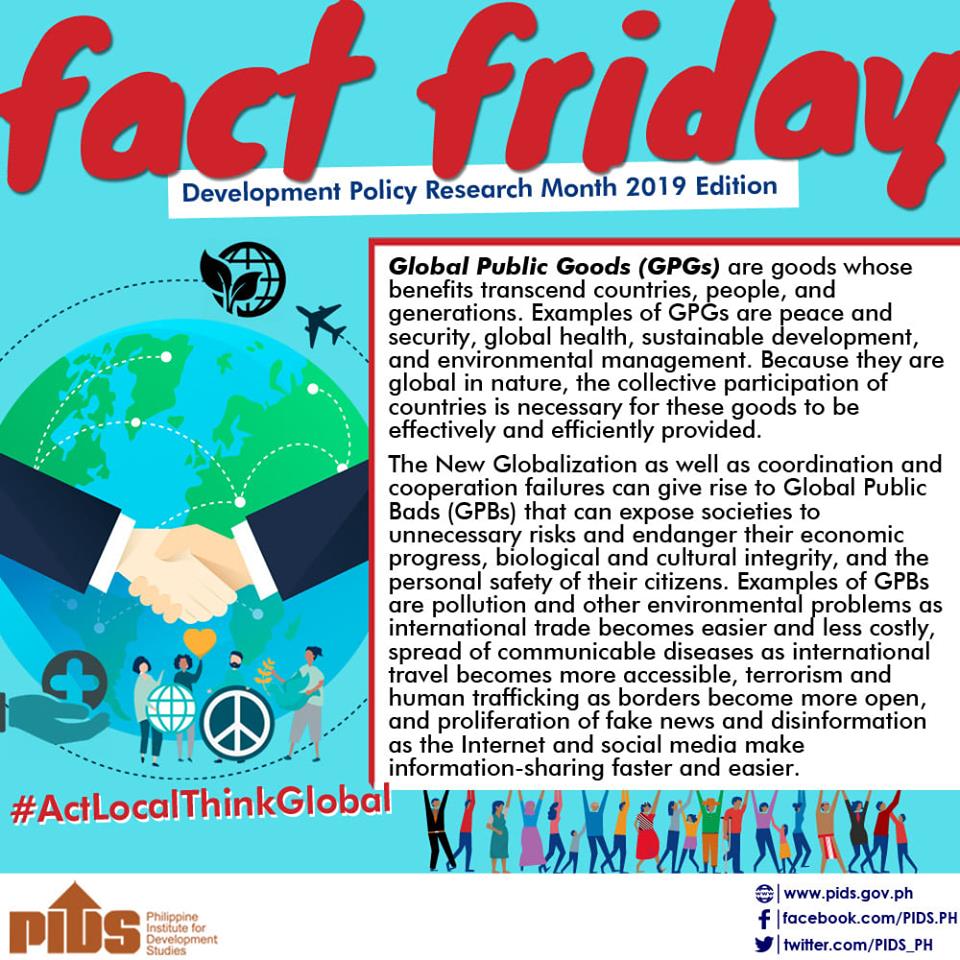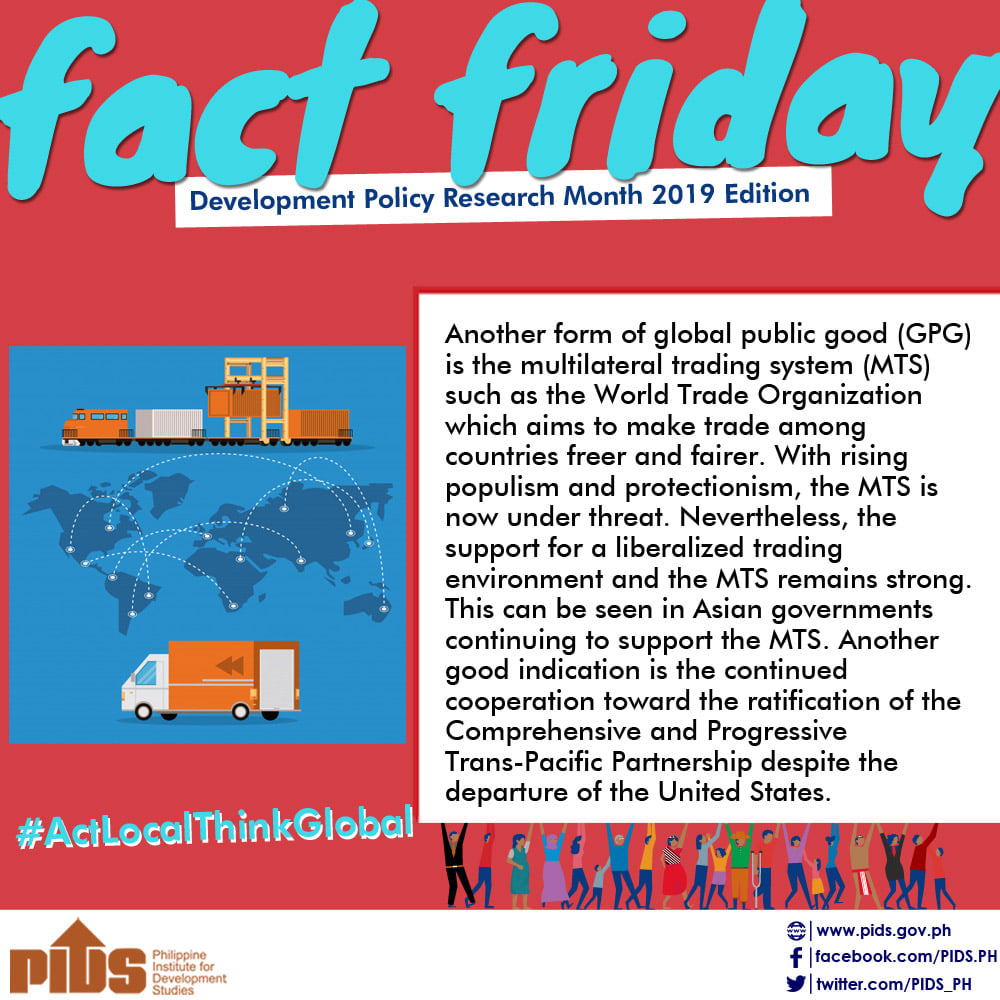This paper examines the competitiveness of the Philippine information technology (IT) industry vis-à-vis its emerging competitors and neighboring countries in the region. While the industry boasts of being the largest foreign exchange earner for the country, it suffers from structural weaknesses that unless addressed, risks its long-term competitiveness; more so that the country's competitors are increasing their stake in the world IT market much faster than the country. Infrastructural and institutional bottlenecks and the inadequacy of the educational system to meet the human resource requirements of the industry have remained a severe constraint to its long-term growth. With the accelerating global technology race, opportunities for the country to upgrade its competitive position have become much more difficult. Some cross-cutting strategies are identified to lessen or overcome such difficulties and keep the industry's present edge.
Citations
This publication has been cited 5 times
- Austria, Myrna S.. 2001. Liberalization and regional integration: The Philippines’ strategy for global competitiveness. Philippine Journal of Development PJD, 38. Philippine Institute for Development Studies.
- Austria, Myrna S.. 2001. Liberalization and regional integration: the Philippines’ strategy to global competitiveness. Discussion Papers DP 2001-09. Philippine Institute for Development Studies.
- Mapa, Dennis S., Monica Flerida B. Sandoval, and David Joseph Emmanuel B. Yap, . ". 2009. Investigating the presence of regional economic growth convergence in the Philippines using Kalman filter. MPRA Paper 20681. University Library of Munich, Germany.
- Mapa, Dennis S., Monica Flerida B. Sandoval, and David Joseph Emmanuel B. Yap, . ". 2013. Investigating the presence of regional economic growth convergence in the Philippines using Kalman filter. Philippine Journal of Development PJD, 37, no. 2a. Philippine Institute for Development Studies.
- Quibria, M. G., Ted Tschang, and Mari-Len Reyes-Macasaquit. 2002. New information and communication technologies and poverty: Some evidence from developing Asia. Journal of the Asia Pacific Economy, 7, no. 3. Taylor & Francis Journals.

